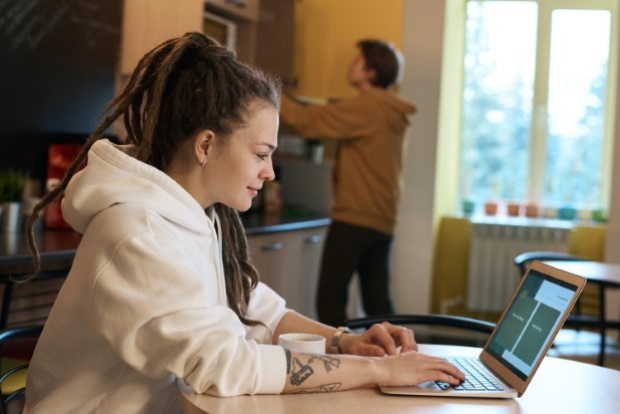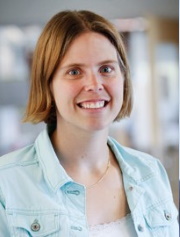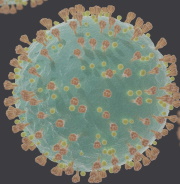How to teach about the coronavirus
A new study guide by professor of biology Melissa Kosinski-Collins and her colleagues offers a remote-learning approach for high school and college students.

Here are some questions you might not have heard answered about the coronavirus and the disease it causes, COVID-19, in the media:
- Why won’t an antibiotic be effective in treating COVID-19?
- How can soap chemically destroy a coronavirus virion?
- How does coronavirus defy traditional models of biology's central dogma?
If you're stumped, don't worry. (Answers are below.) These questions are designed for high-school and college students enrolled in an introductory or mid-level biology class.
They are part of a lesson plan put together by a team of Brandeis scientists for the National Center for Case Study Teaching in Science at the University at Buffalo, The State University of New York.
The center put out an urgent request for teaching tools on the coronavirus on March 19. Three days later, the Brandeis team submitted a draft. A final version was published on the organization's site on March 30.It's available for free as a download on the center's website, though the teaching notes and answer key are restricted to paid members.
Professor of biology Melissa Kosinski-Collins, who worked on the project, said the guide is specially designed for remote learning.
Melissa Kosinski-Collins
"I wanted to help biology students learn about what's happening," she said. "I wanted to make them understand that they have the tools to wrap their heads around this problem even from their home laptop."
The lesson plan, "Pandemic Pandemonium: Why Can’t We Just Treat COVID-19?" begins with an imaginary scenario:Megan and Kat are sisters who find themselves quarantined in their home for two weeks after their mother's coworker tests positive for the virus. The high-school-age girls have plenty of questions about why they're stuck inside and search online for answers.
From here, the lesson plan covers the virus's structure and how it infects cells. When Kat winds up in the hospital with the virus, it deals with treatments.
In the final section, students draft a made-up email to the members of Kat's soccer team explaining what happened to Kat and offering them advice on how to avoid infection.
Assistant professor of biology Kene Piasta, PhD’11, who also worked on the lesson, said he and his coauthors wanted to "push students to think critically about the information. It's about how you can get them to go deeper and deeper until they have that aha! moment and get the conceptual knowledge cemented."
The other authors of the study guide are biology teaching lab supervisors Lindsay Mehrmanesh and Jessie Cuomo.
The group next plans to create teaching resources about coronavirus for upper-level biology students.
ANSWERS:Why won’t an antibiotic be effective in treating COVID-19?
COVID-19 is caused by a virus, SARS-CoV-2. (Technically, COVID-19 is the name of the disease.) Antibiotics treat bacterial infections, not viral infections.
SARS-CoV-2
How can soap chemically destroy a coronavirus virion?
A virion is the technical term for a more specific form of the virus when it's outside the host cell and infectious. Soap molecules, which take the form of little spheres known as micelles, wedge themselves into the virion’s membrane, essentially breaking it into pieces. The virus can’t exist without the membrane.How does coronavirus defy traditional models of biology's central dogma?
The central dogma describes the process of transferring genetic information inside a cell. DNA passes the information to messenger RNA (mRNA) which then moves to the ribosome where it is used as instructions to build a protein. But the coronavirus does not use DNA; the process starts with RNA passing the information to mRNA.Categories: General, Research, Science and Technology





